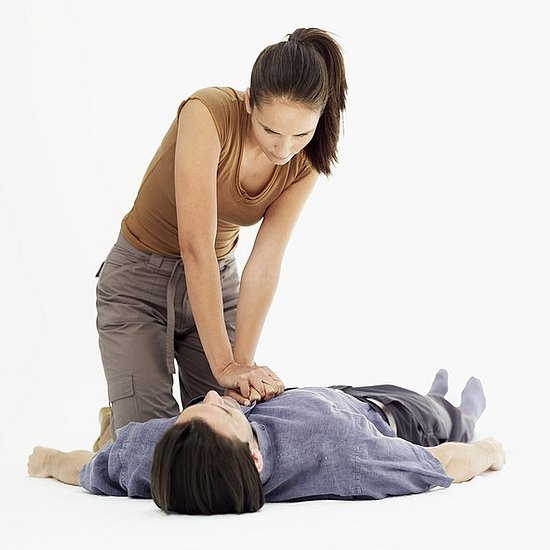SHTF First Aid: Emergency Rescue Breathing

Look and Listen

The first step is to determine if the patient is breathing or not. This may sound obvious, but there are many cases where the patient will be breathing even if you do not see their chest rise and fall. On the other hand, a patient may appear to be breathing even if they are not.
Kneel next to the patient and place your head on their chest. Listen for the sound of air moving in and out of their lungs. If you hear movement of air, then you don’t need to do anything else other than monitor the situation. If you do not hear air movement, then crouch down low enough so that you are at eye-level with the chest and see if it rises or falls.
You can also do the same thing by positioning yourself a couple of feet above the head of the patient. Kneel forward and look down over their chest. You can also place your hand next to their mouth or nose and sense whether air is moving in and out or not.
Basic Airway Opening

If the patient is not breathing, the first step is to make sure that their airway is clear. It is very common for things like mucous, food, vomit or other obstructions are present in the mouth or throat that interfere with breathing, especially if a patient has been seriously injured. Open their mouth and sweep the oral cavity in a scooping motion with your index and middle finger. This check will allow you to remove any obstructions that are present while also determining that it is safe to begin rescue breathing.
Head Tilt and Jaw Slide

Lay the patient flat on their back and kneel just above their head. Lean forward, and cradle the back of their head with your hands just above the base of their skull. Your thumbs should rest along the rear of their jaw below the ears while your forefingers will rest along the bottom ridge of the jaw on either side. Gently tilt their head up and back so their chin and mouth is facing upward. This will help to open the airway by lifting the tongue and soft tissue in the throat. You can also use your thumbs and forefingers to gently pull the jaw up and out to enlarge the airway as well.
Breathing

If you are with someone else, have them pinch the nose and start exhaling puffs of air into the airway. Look for a rise and fall of the chest. If you see the abdomen rise and fall, this is an indicator that the airway is blocked and air is entering the stomach. Check to see that the head and jaw are positioned properly and try again.
If you are alone, kneel next to the head and shoulders of the patient. Take the palm of your hand and press against their forehead and over their eyes so that your thumb and index finger are able to pinch their nose closed. Gently pull the head upward and back in order to expose the airway as best as possible. You can use your other hand to lift the jaw or hold the head in place as you begin to exhale into the patient’s mouth. If the jaw is broken or the patient has sustained a neck injury, breathe into the nose instead.
In both cases, make sure that you are giving about one breath every two to three seconds. If you have a respirator mask, place it above the patient’s mouth and nose and breathe through the vent hole. If you are using mouth-to-mouth, place your lips over the patients open mouth to create a seal that will minimize air from escaping.
Continually Assess

Always look down at the chest while you breathe to ensure that their chest is rising and falling. If not, re-position the head, give a few short breaths and repeat as necessary until you are sure air is moving into the lungs. Breathe only as hard as needed to cause the chest to rise and fall. Breathing too hard can cause damage to the lungs. Breathing too soft can limit the amount of oxygen the patient can receive.
Stop breathing after every 10 breaths or so and check if the patient is able to breathe on their own. If they are not breathing, continue. If they are breathing, discontinue rescue breathing and monitor the situation. There are times when a patient will suddenly gasp for air and recover during rescue breathing as well.
Keep in mind that if the patient has a severe throat injury, swollen airway or other form of obstruction, air passing through may be blocked. The patient may need to be intubated in order to deliver oxygen through the airway. However, in most cases, you will be able to provide at least a minimal amount of air into the lungs until first responders arrive and take over.
Practice this skill and consider taking an emergency first aid course. This simple technique can save lives and reduce the chances of the patient suffering from brain or organ damage due to oxygen deprivation. Your intervention may provide just enough support to carry the patient through until they can receive appropriate medical care.
